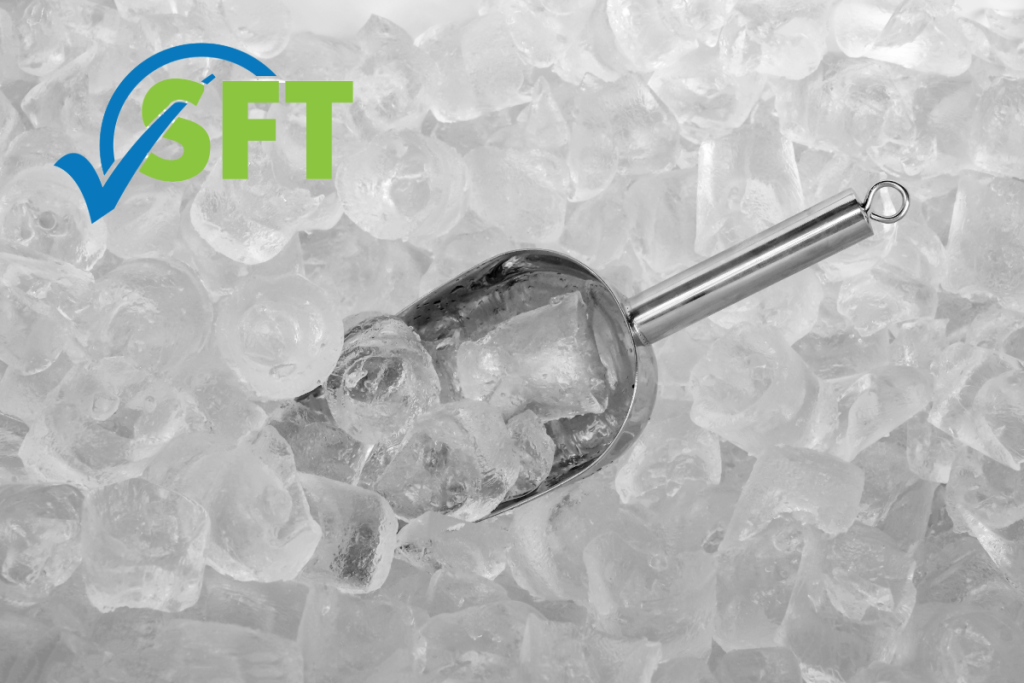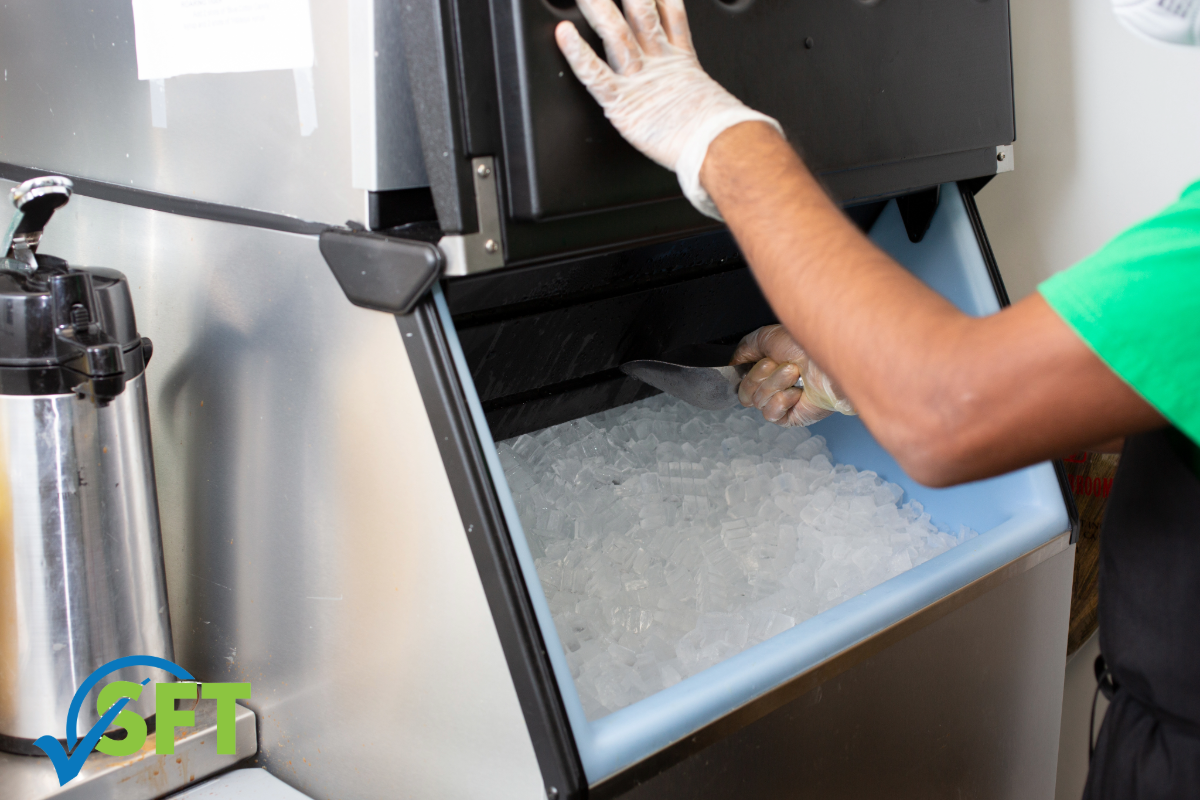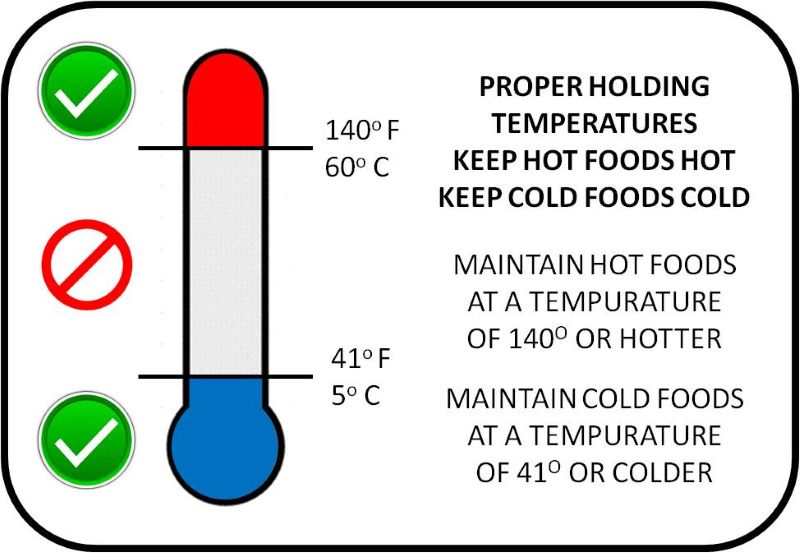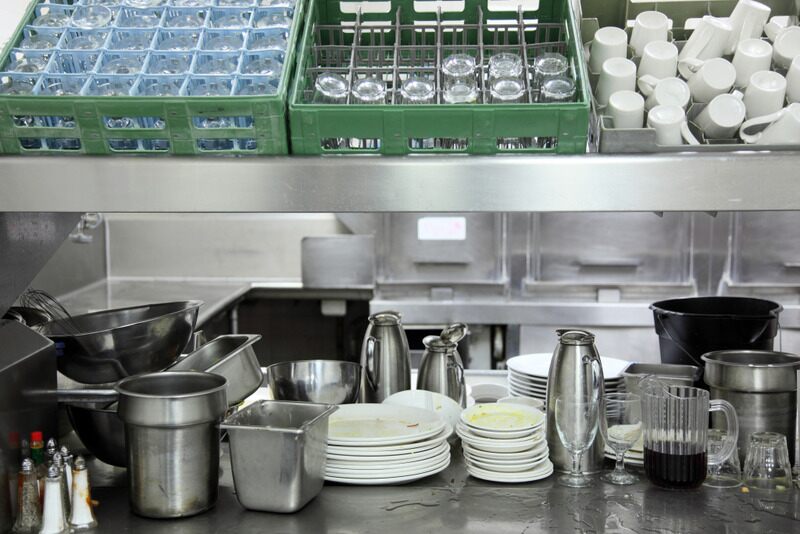As one of the many dedicated certified food managers in Minnesota, you devote countless hours to training your staff on the critical points of food safety. You drill them on handling raw proteins, maintaining the cold chain, and cooking foods to precise temperatures. Yet, a universal ingredient, one that cools drinks and preserves buffet displays, often gets overlooked: ice. Proper ice machine sanitation is not a minor detail—it’s a fundamental component of a safe kitchen that every food manager should regularly review with their team.
The Hidden Risks: Why Ice Is a Food

It’s easy to forget, but the Food and Drug Administration (FDA) officially classifies ice as food. This means it is subject to the same strict handling and sanitation requirements as any other ready-to-eat product. When standards slip, the dark, damp interior of an ice machine becomes a perfect breeding ground for bacteria, biofilm, and mold. The problem isn’t just theoretical.
- Health Hazards: Contaminated ice can introduce harmful pathogens, such as norovirus and E. coli, to your customers, leading to serious foodborne illness outbreaks.
- Allergen Concerns: Mold spores that proliferate in a poorly maintained machine can trigger allergic reactions or asthma attacks in sensitive individuals.
Compliance Violations: A dirty ice machine is a clear red flag for health inspectors and can cause costly violations that damage your establishment’s reputation.
Lorem ipsum dolor sit amet, consectetur adipiscing elit. Ut elit tellus, luctus nec ullamcorper mattis, pulvinar dapibus leo.
Mastering Proper Handling and Ice Machine Sanitation
Simply having an ice machine doesn’t guarantee the production of safe ice. The daily procedures your kitchen and bar staff follow are critical for preventing cross-contamination. Reinforcing these two key handling protocols is essential for everyday safety.
- Eliminate Bare-Hand Contact: The Minnesota food code clearly states that ready-to-eat foods must not be handled with bare hands. Staff should always use a dedicated, sanitized scoop to retrieve ice. For best practice, wearing single-use gloves adds another layer of protection, preventing hands from inadvertently touching the ice supply, even when using a scoop.
- Sanitary Scoop Storage: Do not leave an ice scoop on top of the machine, where it can collect dust, or store it inside the ice bin, where the handle can become contaminated. The only acceptable method is to store the scoop in a dedicated, clean, and sanitized container, or on a sanitized tray, ensuring it is not exposed to environmental contaminants between uses.
Maintaining a Clean Zone: Inside and Out



The safety of your ice depends on the cleanliness of both the machine’s interior and its surrounding environment. You must treat the ice machine as food-contact equipment and maintain the surrounding area to prevent pests and external contaminants from compromising your ice supply.
- The machine is for ice only: It may seem convenient, but you should never use the ice bin as a refrigerator to chill canned beverages, bottles of wine, or other food products. The exterior of these containers is not sanitary and will introduce bacteria and dirt directly into your ice.
- Keep the surrounding area clean: The warmth and moisture from an ice machine’s condenser can create an attractive environment for pests. Clean and remove all debris from the floor and drains under and around the machine. Keep the top of the machine clear and never use it as a storage shelf for boxes, dirty dishes, or other items.
Protecting your customers requires a comprehensive approach to food safety that accounts for every ingredient, including the ice. At Safe Food Training, we focus on the real-world challenges that certified food managers in Minnesota face on a daily basis. Our training goes beyond the basics to cover these often-overlooked hazards that can impact your operation.
Don’t let poor ice machine sanitation undermine your hard work. If you and your team are ready to deepen your understanding of Minnesota’s food safety standards, our expert-led, instructor-led options provide the convenient and comprehensive training you need.
Visit Safe Food Training today to schedule your next session and ensure your establishment is a model of safety, from the first ingredient to the last ice cube.





